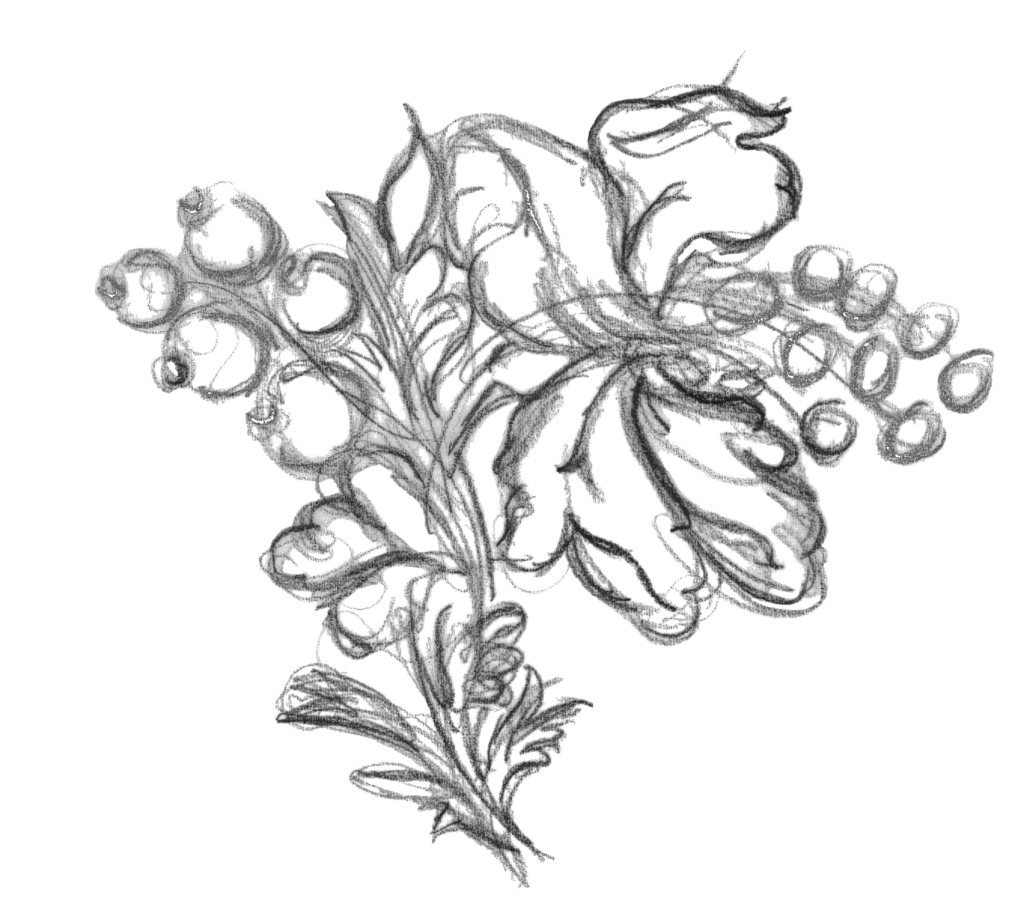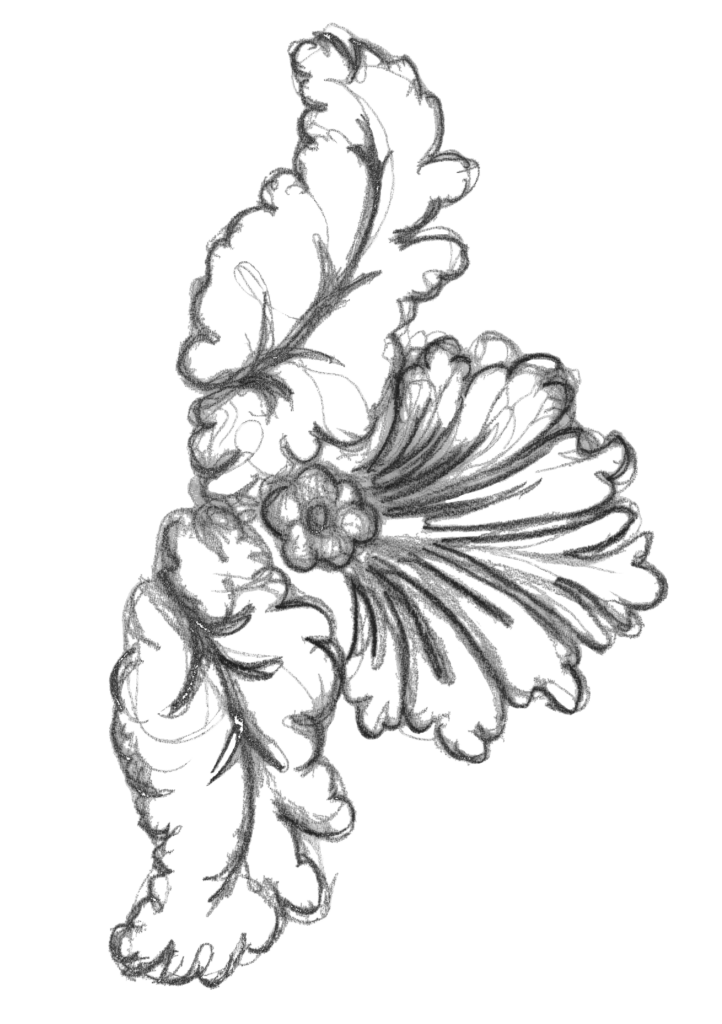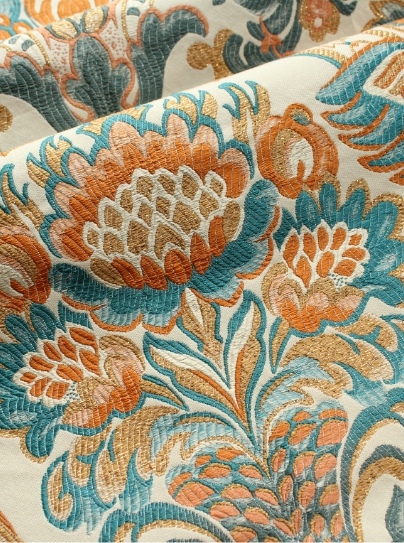The Great Beds of Humphries – Part Two
Almost from the beginning, Humphries Weaving has woven cloths for beds in important places which have required specialist weaving skills to restore them to their former glory. Here we bring together a vast array of cloths woven for Great Beds that can be seen in museum collections, palaces and houses.
The Great Beds of Humphries- Part Two considers 4 beds including the Metropolitan Museum Bed in New York, and two ‘Angel’ style beds.
St Fagan’s Folk Museum bed, Cardiff
The walls of the mighty Hampton Court Palace are bedecked with many interior finishes featuring oak panels, medieval bricks and tapestries. The late seventeenth century saw the introduction of textile wall coverings which were at first loose hung, but later in the eighteenth century damask patterns were stretched and nailed to battens on the walls. In the early part of the century large Italian designs were in fashion and one such design was chosen for the palace walls. The design was reproduced in the 1950’s for the walls of Hampton Court palace in a silk and cotton, hand woven quality.
In 1978 we were sent a small image of a fragment of silk damask from the Half-tester late 17th century bed at the National folk museum of Wales, Cardiff. The bed drapes at this stage had all but disintegrated and there was not enough to see any design. However, a photograph showed one unique design motif which was un-mistakenly part of the same design from the Hampton Court Palace walling. From this small image we were able to confirm recondition of the design which once graced and decorated the sumptuous bed. The original shade was a deep crimson which was so often used. The rotten tatters of the original drapes gave little evidence of the true shade but tucked away in a double layer of silk cloth, hidden behind a moulding, lay a pristine fragment of fabric. In an untouched condition, this fragment showed the original glorious deep crimson red. The deign was confirmed, and armed with the image of the Palace walling in full, we could recreate the pure silk cloth required. The design was large at 64 inches (163cm) long and 25 inches (63.5cm) wide it was redrawn in the company studio, whilst colour dying and development was entrusted to Glemsford Silk Mills who supplied the pure silk. The stunning result is now on display and the room features window drapes woven at a later date in the same design and colour. To date, the design has not been seen elsewhere in the country.
The 17th Century Bed – Metropolitan Museum, New York
In the style of Daniel Marot, this bed was made for Thomas Baron Coningsby (1656–1729), for Hampton Court, Herefordshire, where it remained until 1925. The curtains, counterpane, head-cloth, and some of the trims are modern copies of the originals. Gifted to the Metropolitan Museum, New York in 1968, it remained in storage until after the great fire at Hampton Court Palace in 1986. During the refurbishment of Hampton Court Palace research was undertaken to find a suitable historic bed. The Metropolitan Museum was asked if they would consider returning the bed to England, but this was not to be. However, this helped spur on the decision to put the bed on permanent display in New York. This gave new challenges to the Museum as although some silk remained in good condition, the drapes and tester decorations had badly decayed. The best part of a remaining drape gave just enough of the original pattern to indicate the design, which in turn was one we were familiar with.
This pattern can be seen in most Royal Palaces in England, but this was yet another version showing a more elongated pattern repeat. Although we had several design versions available it was decided that we should redraw and create an exact match to the original. We found that the original damask was quite narrow and less than the normal 21 inches (53.5cm). We altered our loom weaving width to accommodate this speciality. The blue colour of the original damask had faded away to a hundred shades of tonal differences and it soon became apparent that the colour needed more than one variation to suit different parts of the faded original silk. Creating colour matches between New York and Suffolk created lots of confusion, not least when it was revealed in a gallery photograph that the bed was being matched in tungsten light and not natural daylight. This confusion created many false starts on the colours chosen to harmonise with the faded variations on the original silks. The result was to weave differing weft shades on a dip/dye warp to create enough subtle shade changes to re-dress the exhibit, without it being noticeable.
The completed stunning result of the Museum exhibit shows that, with care taken on colour matching and design drawing, it is possible to bring an ancient bed back to life once more.
The Angel bed at Temple Newsam
Today Temple Newsam, Leeds houses a most beautiful bed that’s “fit for a Queen”. The bed is 300 years old and stood bare and unloved for many years whilst a restoration plan was put in place in time for its 300th Anniversary. It was called an Angel bed as the canopy was suspended by chains from a single hook in the ceiling to give the floating image. Despite it weighing in at almost a ton, the tester appears light and delicate. We first looked at the bed in 2005 and noticed that the tester had two patterns of damask on the inner lining, which despite its age, had survived remarkably well. One of the damasks featured was a familiar pattern seen at Hampton Court Palace and it was very close in shape and proportion to the design seen on the Throne canopy there. The second design was more fragmented and featured strange design elements that seemed to have shell fish shapes.
A chance look through a John Cornforth book on interiors of historic housed revealed an image of a leather embossed pattern, used as a wall panel in a West Country house. This was the very same design as was featured in the tester lining of the Angel Bed. The bed drapes of The Angel Bed were extreme in every way with full plain silk velvet in crimson and gold lace trimming on the outer side. Our project was to copy the colour of the crimson damask tester lining and reproduce the interior lining of the bed in pure silk damask. The design finally used was to be that of the Canopy from Hampton Court Palace as it had the better pedigree line of the two patterns. Although the second design was drawn up in scale for consideration, it was felt that there was a lack of provenance for the damask pattern. The colour matching for this bed was intriguing as the crimson colour was extremely good in places and still had great strength of tone. The HWC archive holds many colour records from previous orders and when compared to these we found an exact match to the crimson shade we had found on the Angel bed at Milton Hall which was originally from Wentworth Woodhouse. This bed was originally crimson with a unique damask pattern dating from the early 18th century. This colour was used in the remaking of the damask linings. The fabric was made in pure silk in a 21inch wide pattern repeat in keeping with the scale of design on the original damask retained in the tester lining.
The Blue Bedroom – Angel Bed at Belton House
In the Blue Bedroom at Belton House, Lincolnshire there is a canopied bed which dates from around 1704 and is a conversion from a four-poster bed dating from the early 18th Century. At almost five metres high the bed is unusually tall and the tester is suspended on chains and two posts at the wall. The bed was re-upholstered in blue damask in 1813 along with window drapes and pelmets for the room which were completed at some point in the 19th Century. The fabric width on this bed was interesting, known in the 18th Century as “Broad-Loom” it was four spans of a man’s hand. Woven widths of cloth at this time were strictly controlled by ancient livery companies that regulated pay and conditions in the trade. The silk cloth, the weft was woven with the gum (exuded from the silk worm) still on the weft yarn, thus making it a cheaper choice. It was decided to weave enough damask in the same original quality, not only for the bed restoration, but also to restore the window drapes and pelmets in the room. The bed dates from around the turn of the 18th century but the fabric design restored was perhaps almost one hundred years later. The design was woven in a celadon blue/green shade to match the best colour found un-faded on the bed tester. This bed, as with the Angel bed at Temple Newsam, featured a bed canopy suspended from the ceiling in the room. The dramatic height of the canopy suspended above the richly embroidered bed coverlet creates a luxurious feel to the restored room in this outstanding National Trust House.




